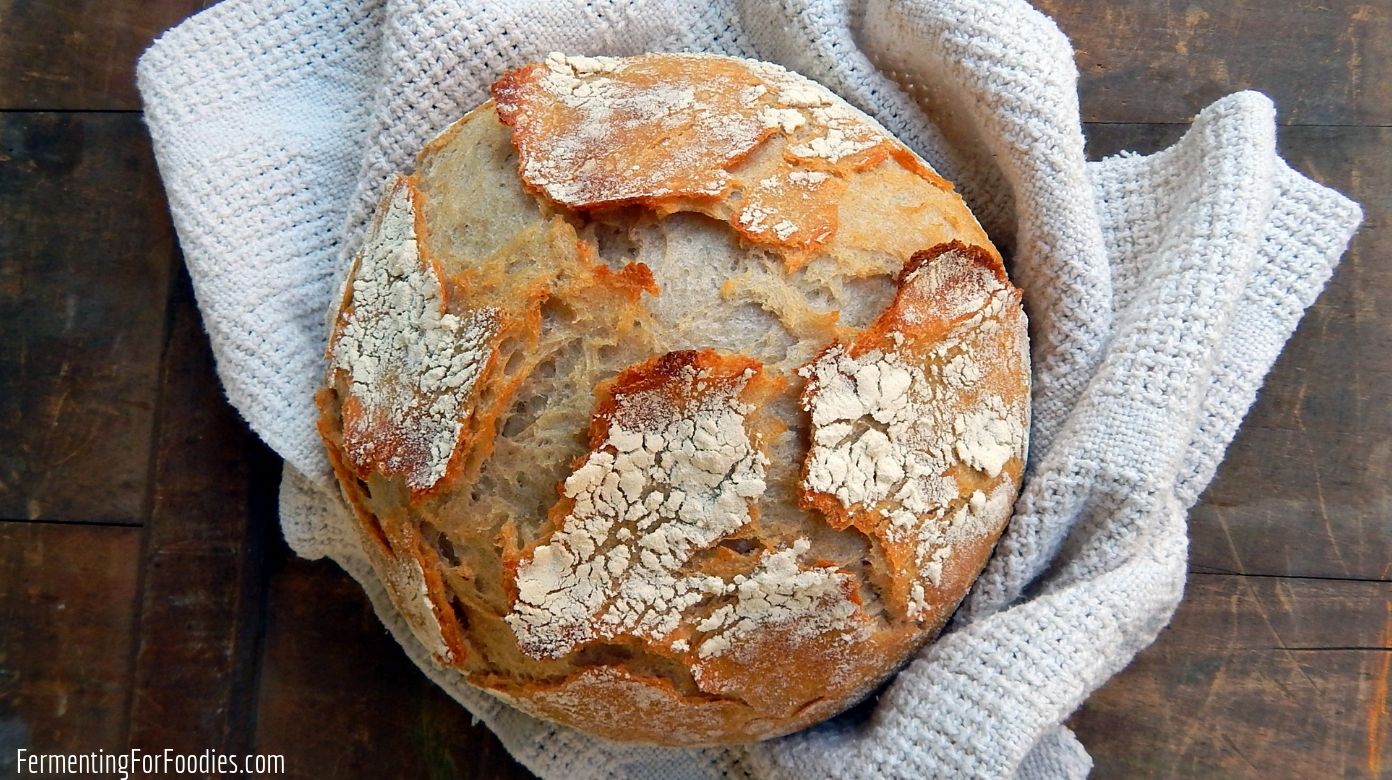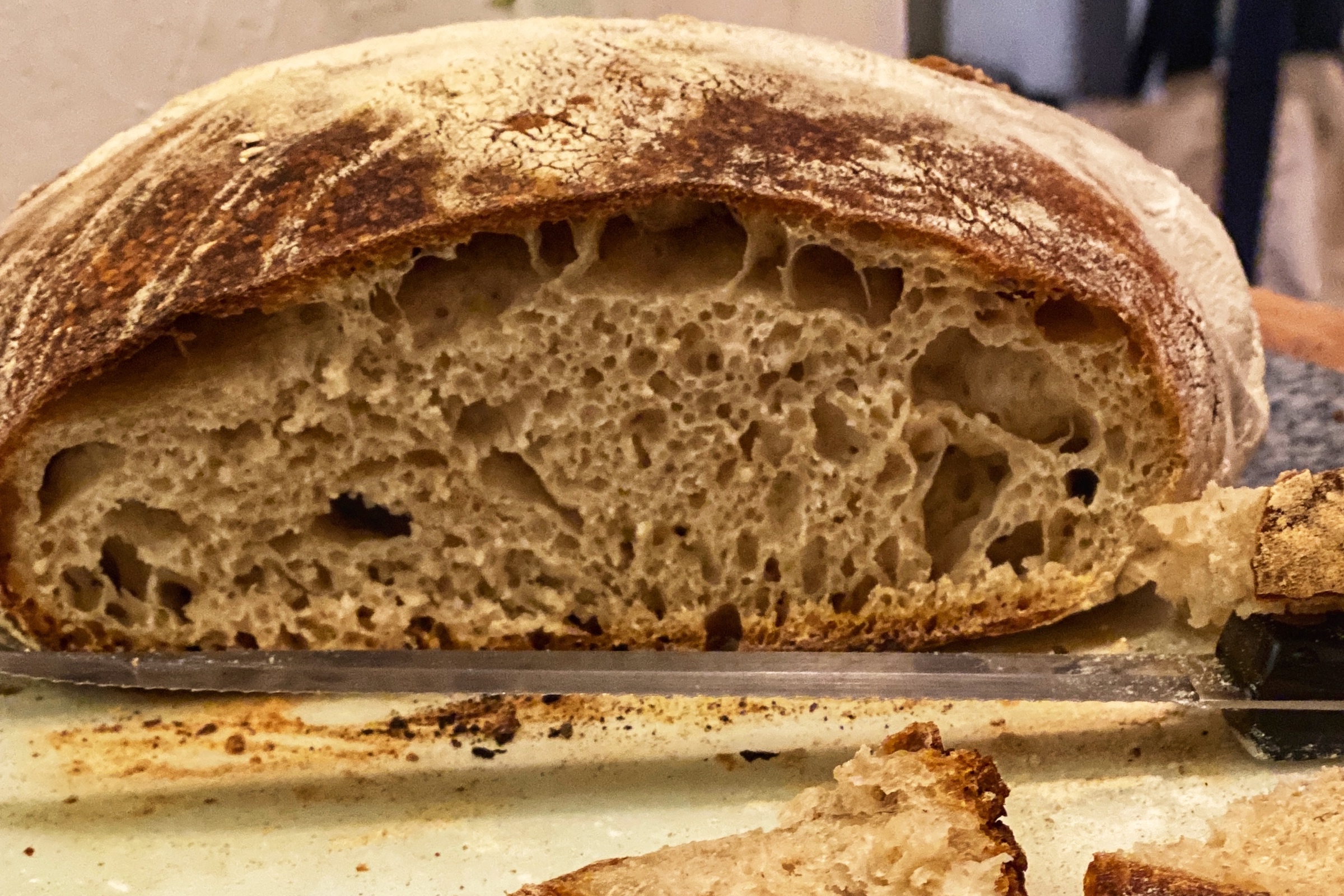
Simply replace the liquid in your favorite sourdough bread recipe with milk kefir. Milk kefir can be a direct stand-in for a sourdough starter whether you don’t have a sourdough starter going, or you lack the time to create the kefir sourdough starter above. USE MILK KEFIR DIRECTLY AS THE “SOURDOUGH STARTER” If you ever find it lacks oomph you can always give it another milk kefir boost. To keep using this starter, feed it like a normal sourdough starter with flour and water. Use in your favorite sourdough recipes.
/potato-flake-sourdough-1806084-hero-01-607c6775f7de44c69acbbf5321a371b7.jpg)
 Culture 2 to 3 days at room temperature or until it is bubbling and active. Place a breathable lid such as a towel or coffee filter over the jar and secure it tightly. Combine 1 cup each flour and milk kefir in a quart jar. Alternatively, cover with cheesecloth by cutting a square large enough to cover container and secure with rubber band.Because milk kefir has many of the components of sourdough, you can make a type of sourdough starter directly from milk kefir! The bacteria and yeasts in the sourdough starter will be the same as in the milk kefir. Cover loosely with lid and store between 70-80☏ (21 to 27☌) for 48 hours. Combine 10g (1/3 ounce) flour and 10g (1/3 ounce) water in one cleaned container, and, using a small rubber spatula, stir together until smooth. Note that while this and the following steps list specific days on which feeding frequency and ratios change, you may need to make those changes on different days and in different ways, based on the observed activity of your starter, as described above in the sections on adjusting your starter schedule and ratio.ĭay 1, Morning: Clean two 8-ounce glass jars (or other 8-ounce containers) with soap and hot water, rinsing well (if you want, you can also run the jars through the dishwasher or boil them in water for 1 minute to further sterilize them). This is a rough outline of the process, based on testing and expert input (for another very detailed template for sourdough starters, check out Kristen Dennis’s starter tutorial. Note: Since starters can develop at drastically different rates, it’s nearly impossible to offer a strict recipe. If you do use a flour blend, it’s helpful to pre-mix a large batch of it to make your life easier when it comes time to refresh your starter. You could just as easily mix whole wheat with AP flour in a 50-50 blend, or any other number of combinations and percentages. Kristen Dennis uses a mix of 10% rye and 90% bread flours, which gets a boost of fermentative activity from the modest amount of rye. Many bakers use blends of flours to achieve starters with desired activity and flavor. Flour Blends: You don’t have to use just one flour when making a starter.
Culture 2 to 3 days at room temperature or until it is bubbling and active. Place a breathable lid such as a towel or coffee filter over the jar and secure it tightly. Combine 1 cup each flour and milk kefir in a quart jar. Alternatively, cover with cheesecloth by cutting a square large enough to cover container and secure with rubber band.Because milk kefir has many of the components of sourdough, you can make a type of sourdough starter directly from milk kefir! The bacteria and yeasts in the sourdough starter will be the same as in the milk kefir. Cover loosely with lid and store between 70-80☏ (21 to 27☌) for 48 hours. Combine 10g (1/3 ounce) flour and 10g (1/3 ounce) water in one cleaned container, and, using a small rubber spatula, stir together until smooth. Note that while this and the following steps list specific days on which feeding frequency and ratios change, you may need to make those changes on different days and in different ways, based on the observed activity of your starter, as described above in the sections on adjusting your starter schedule and ratio.ĭay 1, Morning: Clean two 8-ounce glass jars (or other 8-ounce containers) with soap and hot water, rinsing well (if you want, you can also run the jars through the dishwasher or boil them in water for 1 minute to further sterilize them). This is a rough outline of the process, based on testing and expert input (for another very detailed template for sourdough starters, check out Kristen Dennis’s starter tutorial. Note: Since starters can develop at drastically different rates, it’s nearly impossible to offer a strict recipe. If you do use a flour blend, it’s helpful to pre-mix a large batch of it to make your life easier when it comes time to refresh your starter. You could just as easily mix whole wheat with AP flour in a 50-50 blend, or any other number of combinations and percentages. Kristen Dennis uses a mix of 10% rye and 90% bread flours, which gets a boost of fermentative activity from the modest amount of rye. Many bakers use blends of flours to achieve starters with desired activity and flavor. Flour Blends: You don’t have to use just one flour when making a starter. 
In the right hands, rye flour’s vast fermentative potential is a powerful tool that can result in tall, flavorful, and aesthetically pleasing sourdough bread. But that doesn't mean it's a bad thing (100% Danish rye bread is proof that rye flour produces good bread). Rye has a lower gluten protein content than wheat flour, which produces a more slack, sticky, and dense dough. Naturally rich in amylases, nutrients, and microbes, this cereal flour is known for faster, more efficient fermentation.
Rye Flour: Rye flour is another popular option for sourdough starters. On the other hand, the inclusion of sharp bran can inhibit gluten development, which means your bread might not rise as high, retain its shape, or effectively trap gases. Due to minimal processing, it is said to be packed with nutrients and potential microbes, providing faster fermentation for a starter. Whole Wheat Flour: Whole wheat flour includes the entire grain of wheat-including the bran, endosperm, and germ. This higher protein level gives the starter and bread doughs the ability to trap gas more effectively, resulting in that classic open crumb of a sourdough loaf. Unbleached Bread Flour: “The more protein you have, the more rise you will have,” says sourdough expert Kristen Dennis, and bread flour has the most, with a protein content ranging from 12% to 14%. It's better to use unbleached white flour: The bleaching process depletes the potential population of microbes in flour, which can slow down the development of a starter. While any all-purpose flour can work, the higher the protein percentage, the closer the flour will be to bread flour, which can lead to more rise during baking. 
Unbleached All-Purpose Flour: The protein content of all-purpose flour varies between 9% and 12%, depending on brand.


/potato-flake-sourdough-1806084-hero-01-607c6775f7de44c69acbbf5321a371b7.jpg)





 0 kommentar(er)
0 kommentar(er)
